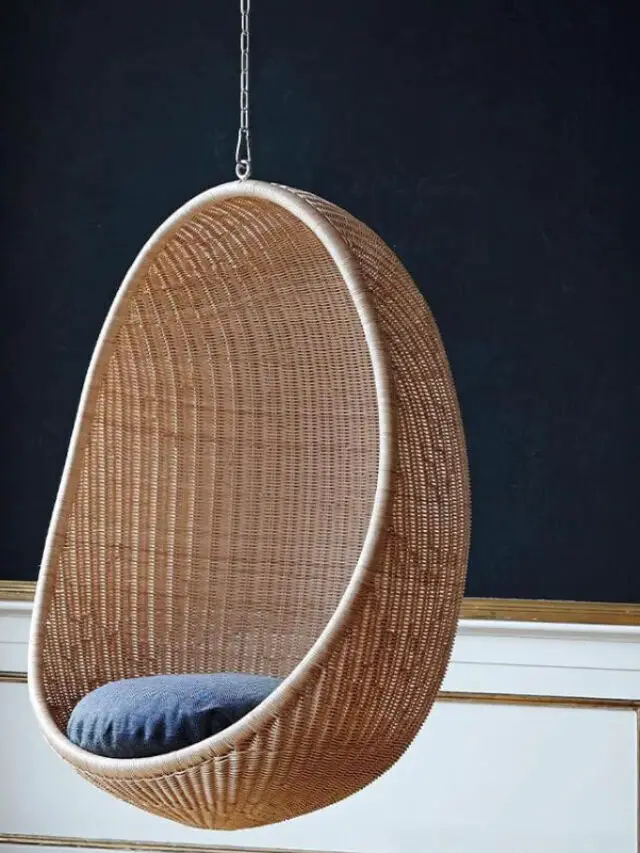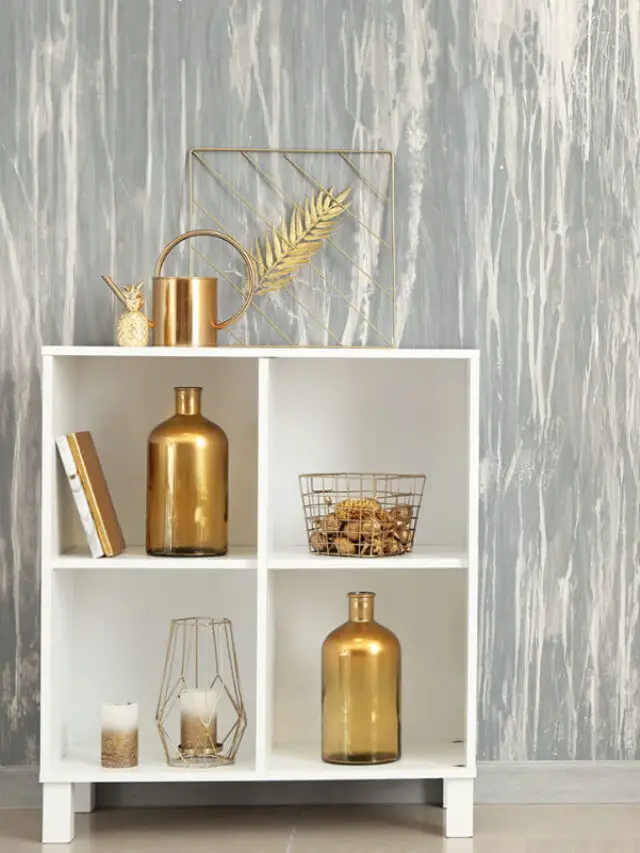I recently attended an exhibition at the Milwaukee Art Museum entitled Scandinavian Design and The United States 1890 – 1980. This exhibition was co-organized by the Milwaukee Art Museum, The Los Angeles County Museum of Art, Nationalmuseum Sweden, and Nasjonalmuseet Norway.
The exhibition gave an excellent overview of how Scandinavian designers and design impacted American design and life from 1890 to 1980; this impact continues in the design world even today. Read on as we show you some of what we felt were some of the most exciting designs on display.
Table of Contents
- Scandinavian Design And The United States 1890 – 1980: A Hidden Legacy Revealed At The Milwaukee Art Museum
- The Legacy Of Scandinavian Design
- Rag Rugs: Ida Laituri Nevala’s Enduring Craftsmanship
- Edward F. Worst And The Art Of Weaving
- Jens Risom’s Innovative Chair Design
- Greta Magnusson Grossman’s Fusion Of Scandinavian And California Design
- Greta Von Nessen’s Versatile SPH Lamp
- Peer Smed And Peter Berg’s Silver Craftsmanship
- Jens H. Quistgaard And Dansk Designs
- Finn Juhl And The Modern Armchair
- Arne Jacobsen’s Timeless Shell Chair
- Watch Our Short Stories About Top Scandinavian Designers And Brand Below!
- Frequently Asked Questions
- Related Content
Scandinavian Design And The United States 1890 – 1980: A Hidden Legacy Revealed At The Milwaukee Art Museum
In design, the impact of Scandinavian influence on the United States is often overlooked. However, the recent exhibition “Scandinavian Design and The United States 1890 – 1980” showcased the enduring relationship between the Nordic countries (Denmark, Finland, Sweden, Norway, and Iceland) and the United States.

The exhibition, which traveled to Los Angeles, Milwaukee, and parts of Scandinavia, unveiled the profound influence of Scandinavian design on American aesthetics for nearly a century. From the influx of Scandinavian immigrants to the United States to the ongoing interest in Scandinavian design, this exhibition shed light on a hidden narrative in the history of American design, emphasizing the significant contributions of European immigrants.
The Legacy Of Scandinavian Design
The exhibition began by exploring the migration of Scandinavian immigrants to the United States. These immigrants brought their rich cultural heritage, including a deep appreciation for design and craftsmanship.
Many immigrants became influential figures in American interior and product design. By highlighting the stories of these individuals, the exhibition underscored the role of immigration in shaping the design landscape of the United States.
Rag Rugs: Ida Laituri Nevala’s Enduring Craftsmanship
The rag rug tradition is a notable example of the Scandinavian design showcased in the exhibition. Ida Laituri Nevala, a Finnish-American designer, exemplified the frugality and resourcefulness of pioneer life in America through her woven creations.
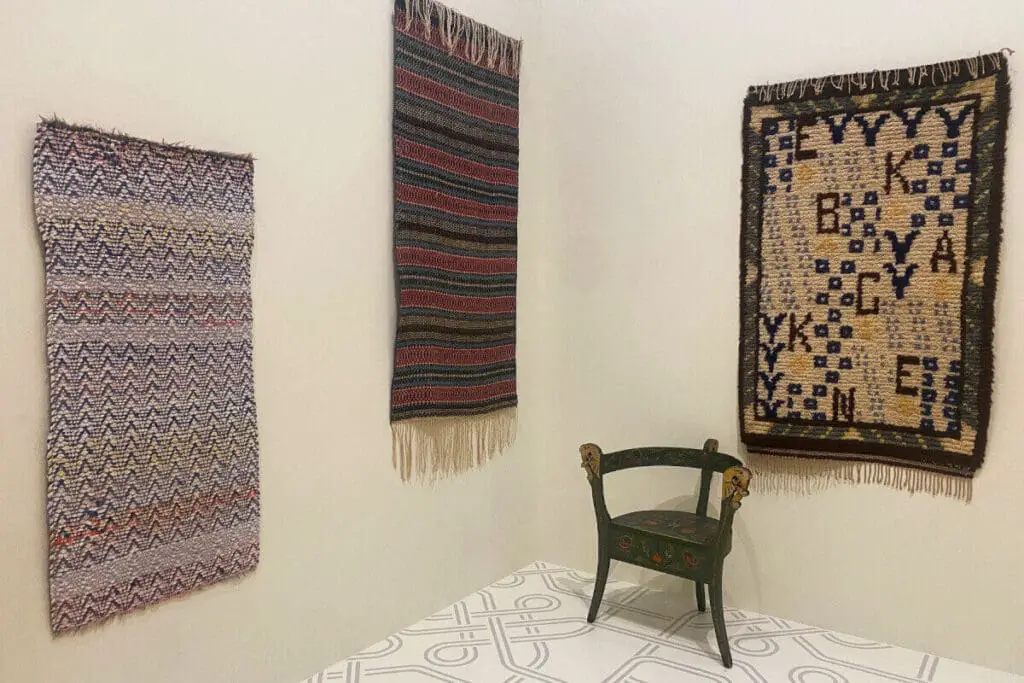
These rugs, made from recycled cloth and remnants, symbolize Finnish-American heritage, particularly in Michigan’s Upper Peninsula.
Edward F. Worst And The Art Of Weaving
Edward F. Worst, an American weaver who studied in Sweden, played a pivotal role in popularizing weaving in the United States. His expertise in this traditional Scandinavian craft led him to teach weaving techniques at Chicago public schools and workshops at the renowned Penland School of Crafts in North Carolina.
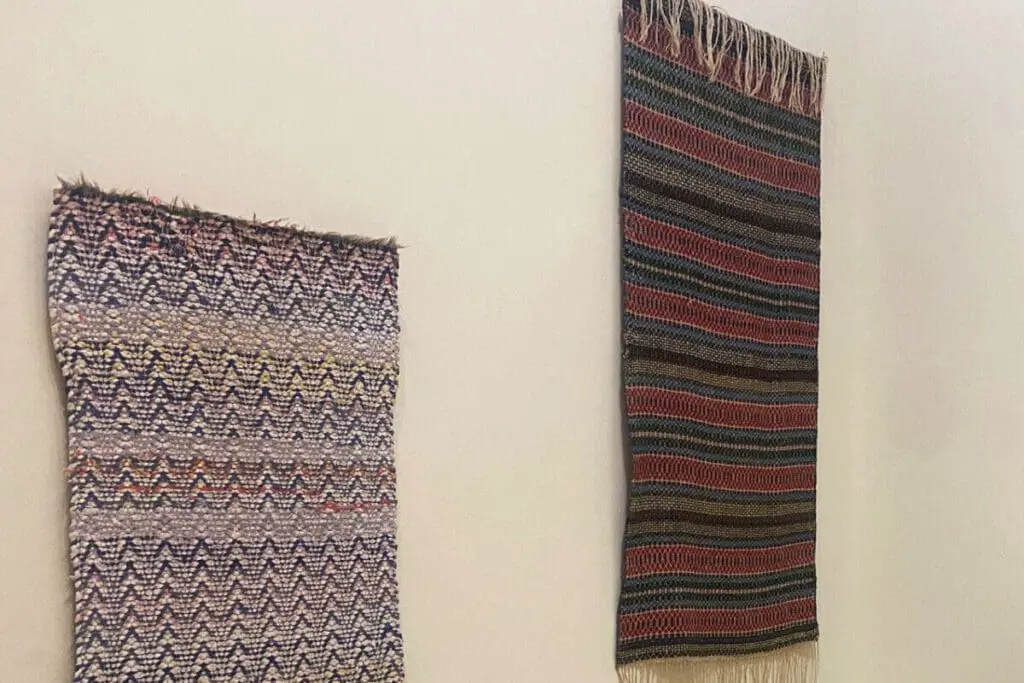
The exhibition showcased Worst’s table runner, made from cotton, which exemplified his dedication to preserving and promoting this ancient craft.
Jens Risom’s Innovative Chair Design
Jens Risom, a Danish-born designer, left an indelible mark on American furniture design. The exhibition featured Risom’s iconic Model 650 chair, made from maple and jute, which Knoll Associated Inc produced.
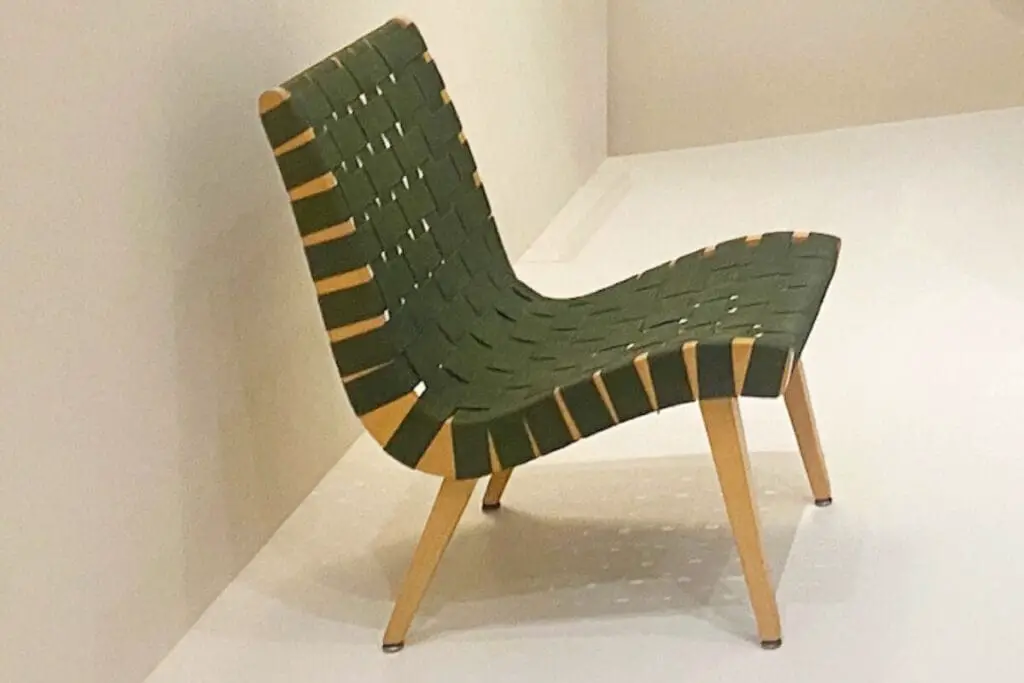
Greta Magnusson Grossman’s Fusion Of Scandinavian And California Design
Greta Magnusson Grossman, a Swedish designer who relocated to Los Angeles, blended the influences of Scandinavian and California design in her desk creation. The exhibition highlighted her desk, made from walnut, iron, and Formica, which exemplified her mastery of light and dark contrasts.
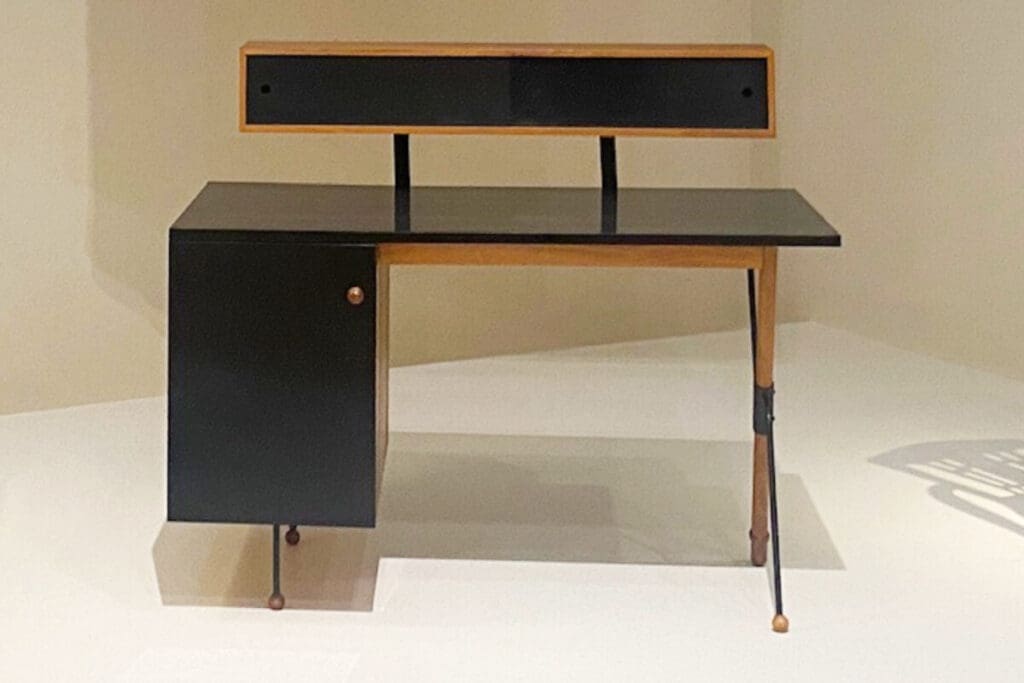
Grossman’s work showcased the interplay between her Scandinavian roots and the vibrant design scene of California.
Greta Von Nessen’s Versatile SPH Lamp
Greta Von Nessen, a Swedish industrial designer, left an indelible mark on American lighting design. Designed in 1951, her SPH Lamp allowed for versatile installation options, including standing, pinning to the wall, and hanging.
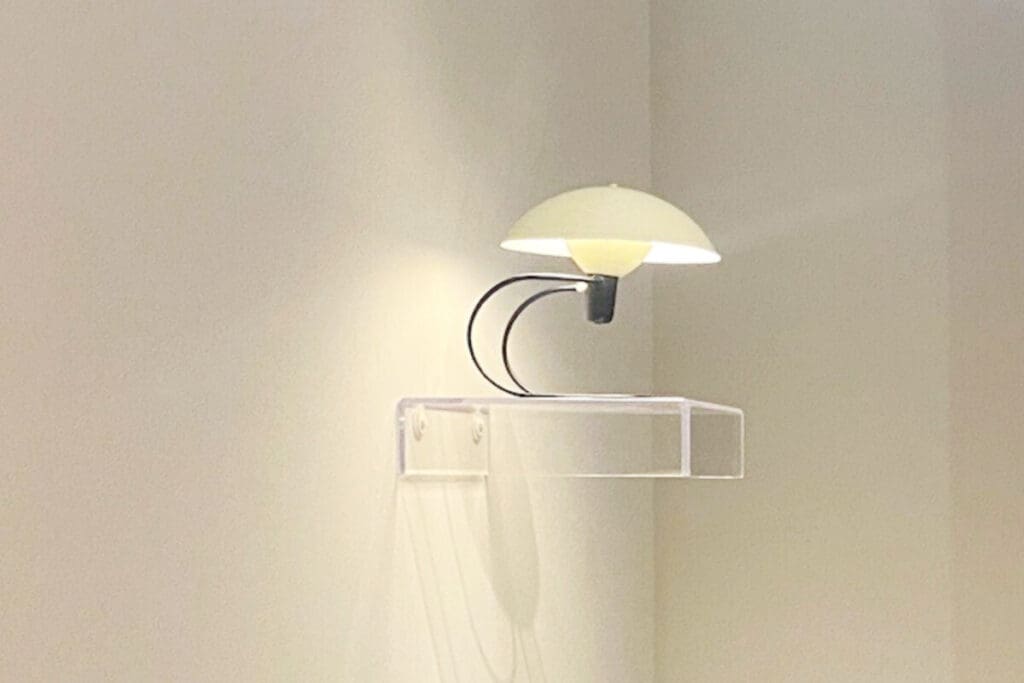
Von Nessen’s lamp, produced by Nessen Studio Inc. in New York, exemplified her technical expertise and innovative approach to lighting design.
Peer Smed And Peter Berg’s Silver Craftsmanship
Peer Smed, a Danish-born designer, and Peter Berg, a Norwegian-born artist, demonstrated their exceptional craftsmanship through their silver creations. The exhibition showcased Smed’s Silver Cocktail Shakers, featuring a striking owl design, which captured visitors’ attention with its unique aesthetic.
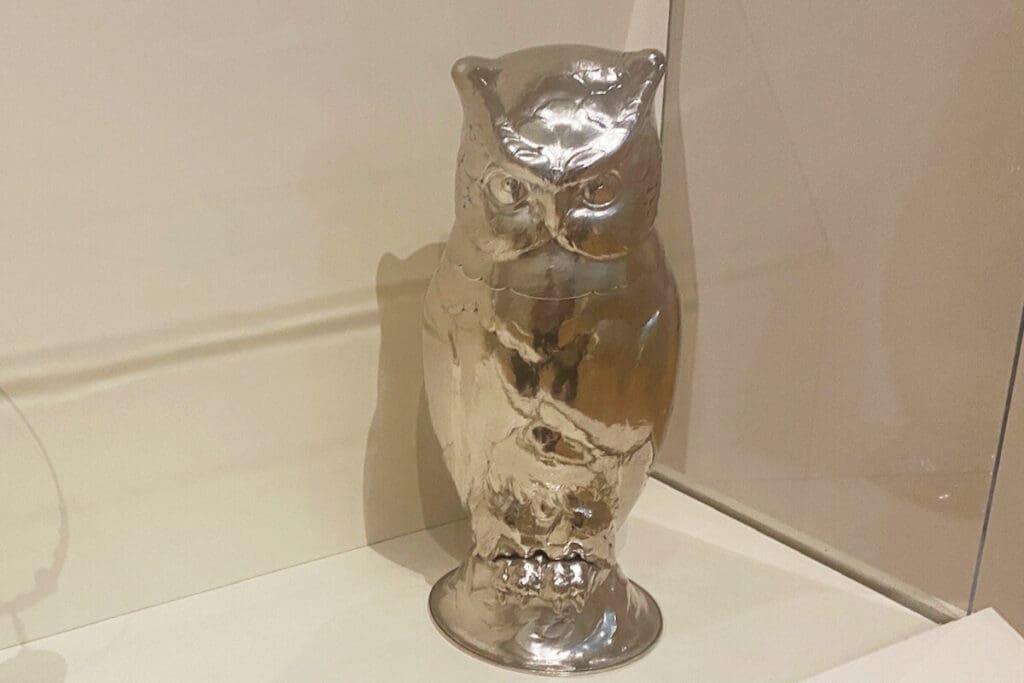
Additionally, Berg’s Silver Candelabras, designed for the Kalo Shop in Chicago, showcased the meticulous handcraftsmanship characteristic of Scandinavian artists.
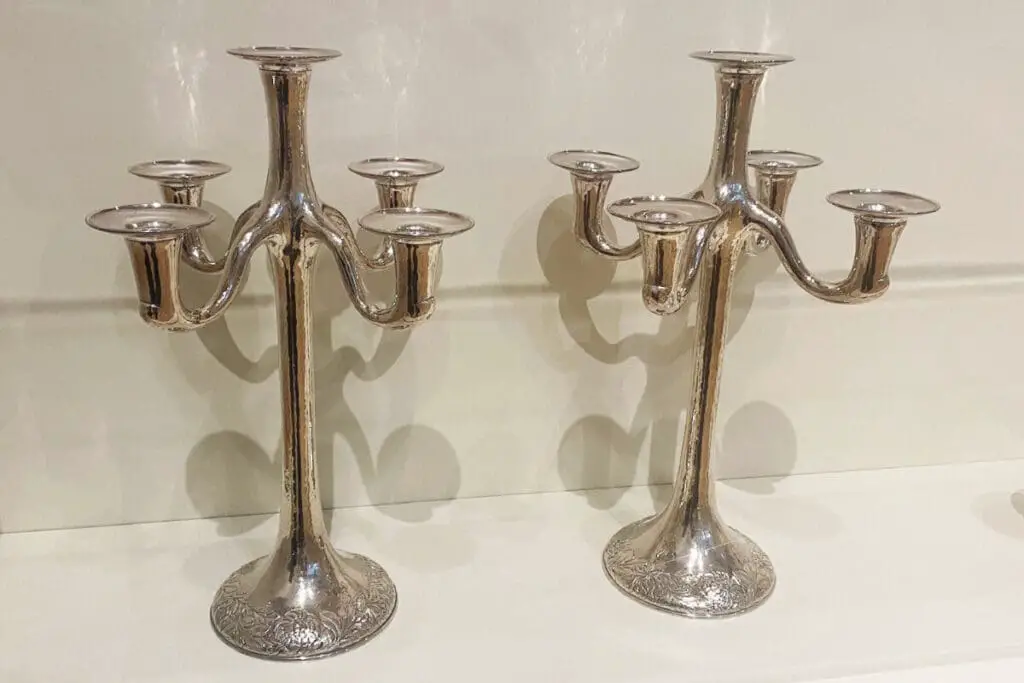
Jens H. Quistgaard And Dansk Designs
Jens H. Quistgaard, a Danish designer, significantly impacted American design through his collaboration with Dansk Designs in New York. The exhibition highlighted Quistgaard’s teak and metal ice buckets, casserole dishes made from enamel and steel, and pitchers.
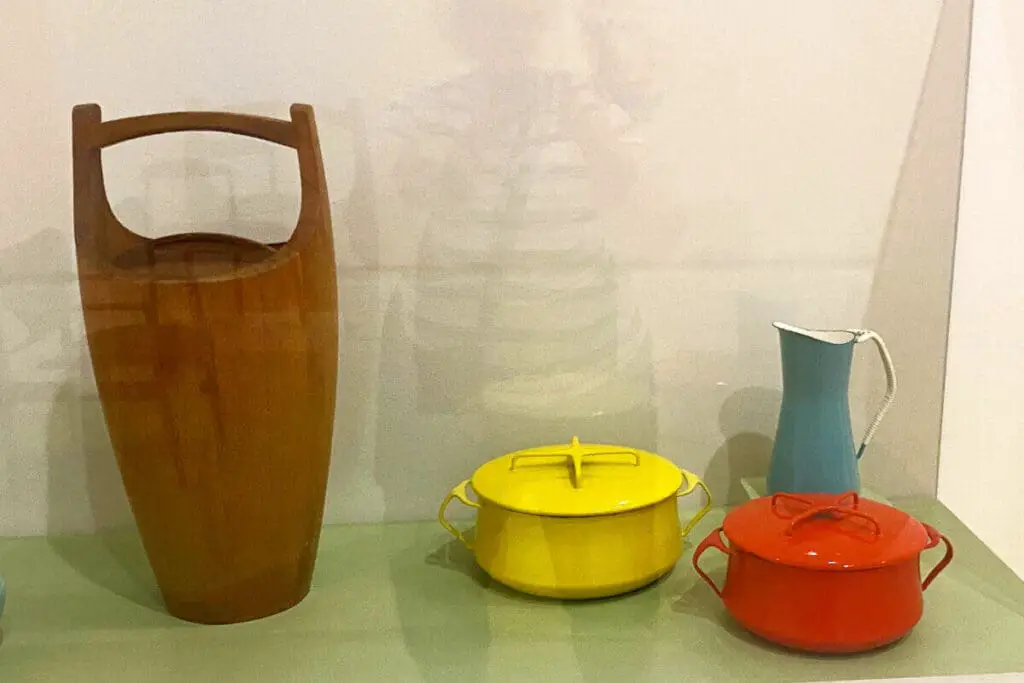
These pieces, characterized by vibrant colors and modern designs, exemplified the distinctive Scandinavian aesthetic that became synonymous with Dansk Designs.
Finn Juhl And The Modern Armchair
A Danish designer, Finn Juhl, played a pivotal role in introducing modern furniture to the American market. The exhibition featured Juhl’s Armchair Model 400-1/2, crafted from walnut and leather.
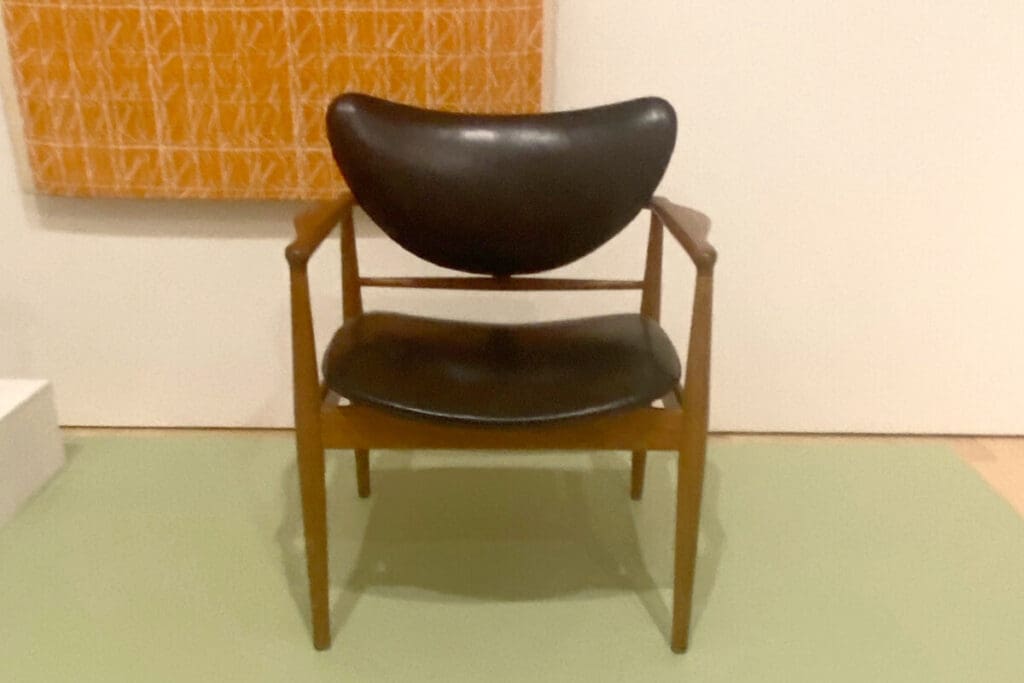
After catching the attention of Baker Furniture’s president, Juhl was invited to create a line of modern furniture tailored to American tastes. His iconic armchair, manufactured by Baker Furniture in Grand Rapids, Michigan, exemplified his ability to blend functionality, comfort, and sleek design.
Arne Jacobsen’s Timeless Shell Chair
No exploration of Scandinavian design would be complete without mentioning Arne Jacobsen’s Iconic Shell Chair. Designed in 1972, this Danish masterpiece continues to captivate audiences worldwide with its sculptural form and unparalleled comfort.
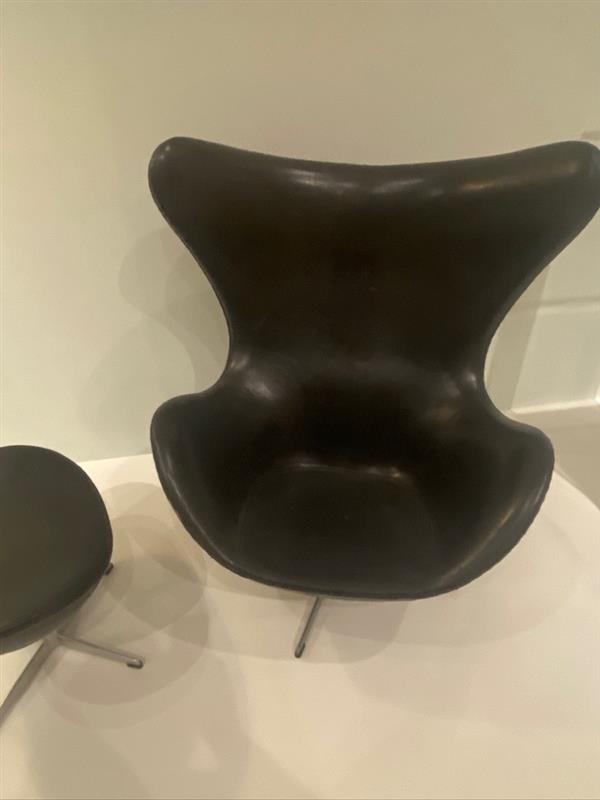
The exhibition highlighted the enduring relevance of the Shell Chair; I recently saw a version of the shell chair in the United Airlines lounge in Tokyo, Japan. Jacobsen’s design exemplifies Scandinavian design’s timelessness and lasting impact on the global stage.
The “Scandinavian Design and The United States 1890 – 1980” exhibition at the Milwaukee Art Museum unveiled the profound influence of Scandinavian design on the United States over a century. Through the lens of immigration, the exhibition demonstrated how Scandinavian immigrants played a pivotal role in shaping American design, particularly in interior and product design.
Watch Our Short Stories About Top Scandinavian Designers And Brand Below!
The showcased examples, from traditional crafts like rag rugs and weaving to iconic furniture designs and lighting fixtures, highlighted Scandinavian design principles’ enduring relevance and timelessness. The exhibition served as a testament to the cultural exchange and fusion of aesthetics between the Nordic countries and the United States, reminding us of the profound impact that immigrants have had on shaping the American design landscape.
As we continue to appreciate and draw inspiration from Scandinavian design, we must recognize and celebrate the hidden stories and legacies behind these remarkable creations.
Find out more about how Mondoro can help you create, develop, and manufacture excellent home decor and furniture products – don’t hesitate to contact me, Anita. Check out my email by clicking here or become a part of our community and join our newsletter by clicking here.
Mondoro gives out a FREE Lookbook to anyone interested. You can receive a copy of our latest Lookbook by clicking here.
Listen to our Podcast called Global Trade Gal. You can find it on all major podcast platforms. Try out listening to one of our podcasts by clicking here.
Subscribe to our Mondoro Company Limited YouTube Channel with great videos and information by clicking here.
Frequently Asked Questions
What is Scandinavian design?
Scandinavian design refers to a design movement characterized by simplicity, minimalism, functionality, and a focus on craftsmanship. It emerged in the Nordic countries, including Denmark, Sweden, Norway, Finland, and Iceland.
How did Scandinavian design influence the United States?
Scandinavian design had a significant impact on the United States, particularly from 1890 to 1980. It influenced American design aesthetics, architecture, and everyday life, leaving a lasting imprint on furniture, home goods, and overall design philosophies.
Who were some influential Scandinavian designers during this period?
Prominent designers include Alvar Aalto, Arne Jacobsen, Hans Wegner, Bruno Mathsson, and Eero Saarinen. Their innovative approaches to design and use of materials played a crucial role in shaping the movement.
What were the key characteristics of Scandinavian design during this time?
Scandinavian design during this period was characterized by clean lines, organic forms, functionality, use of natural materials, and a commitment to craftsmanship. These principles aimed to create aesthetically pleasing, practical, and accessible designs.
How did Mid-Century Modernism relate to Scandinavian design?
Mid-Century Modernism in the United States was heavily influenced by Scandinavian design principles. The clean lines, simplicity, and focus on functionality that defined Mid-Century Modernism had strong roots in the Nordic design ethos.
Were there specific design movements within this period that reflected Scandinavian influence?
Yes, Mid-Century Modernism is a prime example. The movement, prevalent from the 1930s to the 1960s, showcased designs that echoed Scandinavian principles, contributing to the popularity of this aesthetic in the United States.
How did Scandinavian design evolve over the years within the United States?
Scandinavian design evolved from its initial introduction in the late 19th century to becoming a major influence during the mid-20th century. The design philosophy continued to shape American aesthetics through collaborative projects and cross-cultural exchange until at least the 1980s.
Is Scandinavian design still relevant today?
Absolutely. The principles of Scandinavian design, such as simplicity, functionality, and sustainability, continue to be highly relevant in contemporary design. Many designers and consumers still appreciate and incorporate Nordic design elements into their homes and lifestyles.
What is the legacy of Scandinavian design in the United States?
The legacy of Scandinavian design in the United States includes its enduring influence on architecture, furniture design, and the overall aesthetic of everyday objects. The movement paved the way for a broader appreciation of minimalist and functional design that persists to this day.
How can I identify Scandinavian design elements in furniture or home decor?
Look for clean lines, simplicity, the use of natural materials like wood and leather, and a focus on functionality. Scandinavian design often features light colors and a harmonious blend of form and function, creating timeless and elegant pieces.
Related Content
12 Living Room Home Decor Wall Ideas For Your Empty Walls
Scandia’s furniture design, designer aesthetics, and philosophies have remained influential since its emergence in the 20th century. The critical focus of Scandia’s design lies in the harmonious blend of form and function, ensuring that beautiful products are not merely eye candy but also practical for everyday use.
You can learn more by reading our blog, 12 Living Room Home Decor Wall Ideas For Your Empty Walls by clicking here.
Scandia Design Furniture And Designers: Pioneers Of Simplicity
Scandia’s furniture design, designer aesthetics, and philosophies have remained influential since its emergence in the 20th century. The critical focus of Scandia’s design lies in the harmonious blend of form and function, ensuring that beautiful products are not merely eye candy but also practical for everyday use.
To learn more, you can read Scandia Design Furniture And Designers: Pioneers Of Simplicity by clicking here.
Wabi-Sabi: Embracing Imperfection And Transience In Design
In an era where everything is mass-produced to perfection, where symmetry is celebrated, and where glossy, flawless finishes are the norm, the ancient Japanese design philosophy of Wabi-Sabi offers a breath of fresh air. Instead of striving for perfection, Wabi-Sabi celebrates imperfection and sees beauty in the simple, rustic, and imperfect life and design choices.
You can discover more by reading Wabi-Sabi: Embracing Imperfection And Transience In Design by clicking here.


